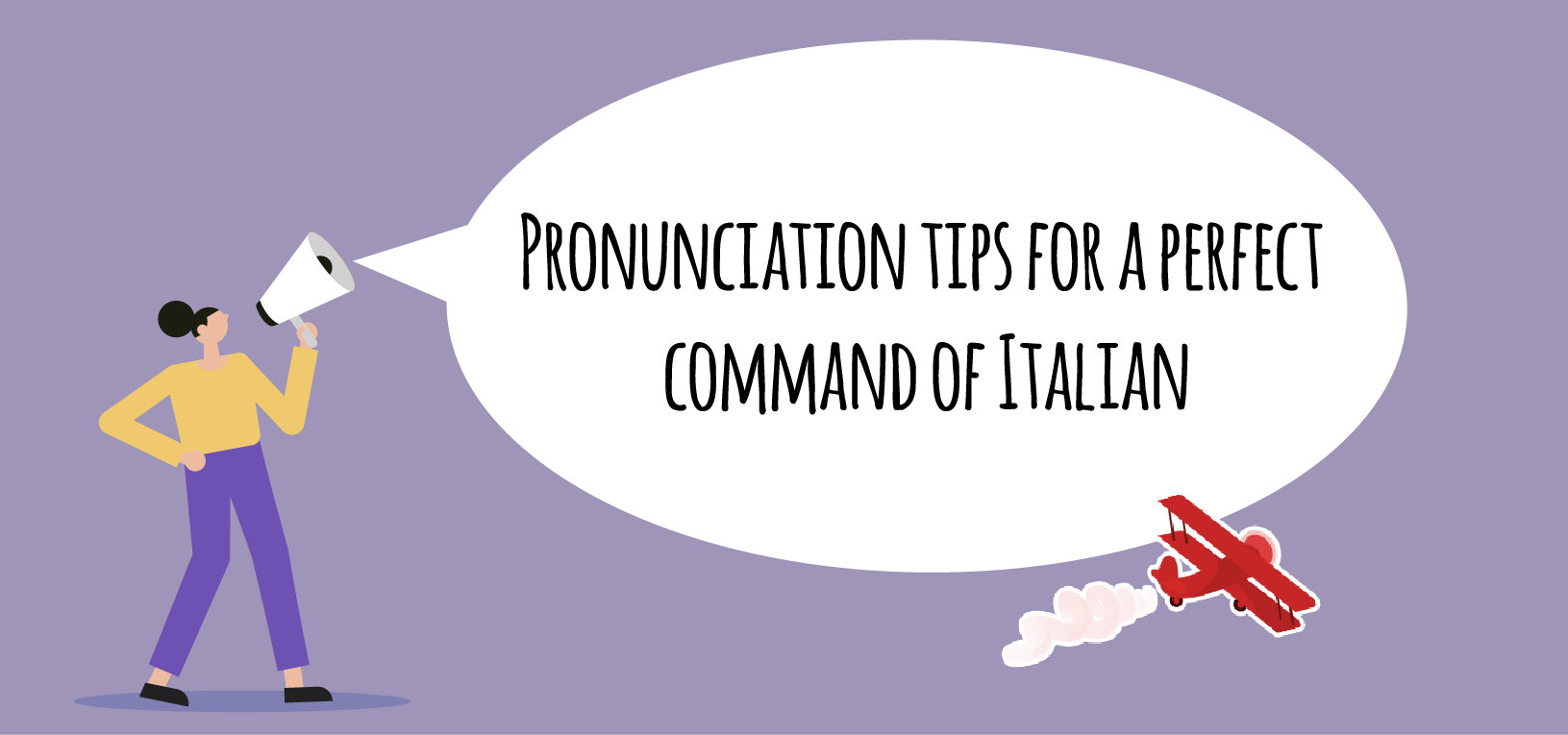Pronunciation tips for a perfect command of Italian

Pronunciation tips for a perfect command of Italian
INDEX OF CONTENTS
- Lose the embarrassment to pronounce correctly
- Know phonetics
- Pronounce the double consonants
- Word stress
- The pronunciation of the letter “C”
- Differentiate the sounds of the letter “g” and its pronunciation
- The pronunciation of the letters ‘z’ and ‘s’ in Italian
Despite the similarities that the Spanish and Italian languages may have, there are aspects that we have to take care of and not trust ourselves , especially when it comes to expressing ourselves orally. If you want to improve your Italian pronunciation and communicate like a true native, stay and read the following tips.
Lose the embarrassment to pronounce correctly
In general, we have a bad habit of pronouncing the words of other languages as we would read them in Spanish. Sometimes we do it out of shame or fear of rejection, but if you are learning a new language, you must get into the role. Your main objective should be to pronounce the words perfectly, so that you are not afraid to show that you have a perfect command of the Italian language .
The more self-confidence you have in yourself, the better your Italian pronunciation will sound and the more confidence you will generate. You can even create an imaginary character in which to shield yourself to overcome that shyness when it comes to letting go.
Know phonetics
Having some basic notions of phonetics will help you better understand how to pronounce words. There are many online dictionaries that will serve as a reference to listen to the correct pronunciation. These dictionaries give the possibility to listen to the words and see the phonetic transcription. The phonetic transcriptions of words always appear between //. It is not necessary that you study phonetics but you do have to associate sounds with symbols and see the differences to Spanish.
Pronounce the double consonants
You know that accent that we try to reproduce when we imitate Italians? Well, it is marked in large part by the pronunciation of the double consonants. A mistake that Spanish speakers usually make is to mark that accent at will. If you can master the Italian pronunciation of double consonants and apply it only when appropriate, you will achieve a perfect accent. There are two ways to pronounce them, for example, with the word “mamma” we will have to pronounce both “m” separately / màm · ma /. On the other hand, with the word “notte”, it is difficult to pronounce both consonants separately, so we will pause before the consonant to lengthen the sound of the “t”.
Word stress
In the Spanish language we have accented words in different syllables, to know where to place the blow of voice we are guided by some rules. On the other hand, in Italian there is only the graphic accent in the acute words , to pronounce the rest of the words that do not contain an accent we will have to remember and retain their accent because there is no rule to guide us. What you should keep in mind is that in Italian there are more esdrújulas words than in Spanish, so you should not be surprised if you find them and they sound different from how they would be pronounced in Spanish.
<h2id = ”pronunciation”> The pronunciation of the letter “c”
For Spanish speakers it is very important to master the use of the “c” in Italian . Depending on the combination we find, its pronunciation will be different. When we find the “c” in front of the vowels ‘a’, ‘o’, ‘u’ is pronounced like the ‘c’ in Spanish. However, in front of the vowels ‘e’, ’i’ like ‘ che ‘ or ‘ chi ‘. We must pay attention because when we find the groups of letters ” che ” and ” chi ” in Italian they will be pronounced as ‘ke’ and ‘ki’ never as ‘ che ‘ or ‘ chi ‘. It is a very common mistake but if you are able to internalize these rules, you will be an expert in Italian pronunciation.
Differentiate the sounds of the letter “g” and its pronunciation
A characteristic of the Italian language is that there is no ‘j’ sound characteristic of the letters “g” and “j” in Spanish. In fact you will not find words with the letter “j” since it does not exist in their alphabet. But then how do we pronounce the letter “g”? When we find this letter in front of the vowels ‘a’, ‘o’, ‘u’ it is pronounced as in Spanish. When we find it in front of the vowels ‘e’, ’i’ the sound is similar to ‘ye’ or ‘yi’. But we can also find it with ‘h’ interspersed as ‘ghe’ or ‘ghi’, in this case it is pronounced as ‘gue’ and ‘gui’. When we find the ‘gu’ in Italian, we must pronounce the vowel ‘u’. Remember that in Italian there is no letter “ñ” in its alphabet either, but there is the sound, which corresponds to the group of letters ‘gn’.
The pronunciation of the letters ‘z’ and ‘s’ in Italian
When in Italian we find an ‘s’ before vowels or a voiced consonant, we must pronounce it with more force than in Spanish . On the other hand, when the ‘s’ appears in combination with the letter ‘c’ forming the group ‘sc’, we must pronounce it as “shhhh” in front of the vowel groups ‘ia’, ‘e’, ’i’, ‘io’ , ‘iu’. This sound is very similar to the one we make when we tell someone to shut up or ask for silence.
The letter ‘z’ has a particular sound , it is also very characteristic of Italian. It usually seems strange and difficult to pronounce, but we give you the trick to master it. When you see the letter ‘z’ remember that it corresponds to “ts” or “ds” and you will see how it no longer resists you, just remember that it is a trick to pronounce it correctly but you should never write it like that.
Now that you have the resources to improve your Italian pronunciation and pass as a true native, you will have to improve your written expression and never stop learning new things about the language. Learning a foreign language is a long-distance race, in which you must continue to learn new things, expand vocabulary and practice whenever possible.



